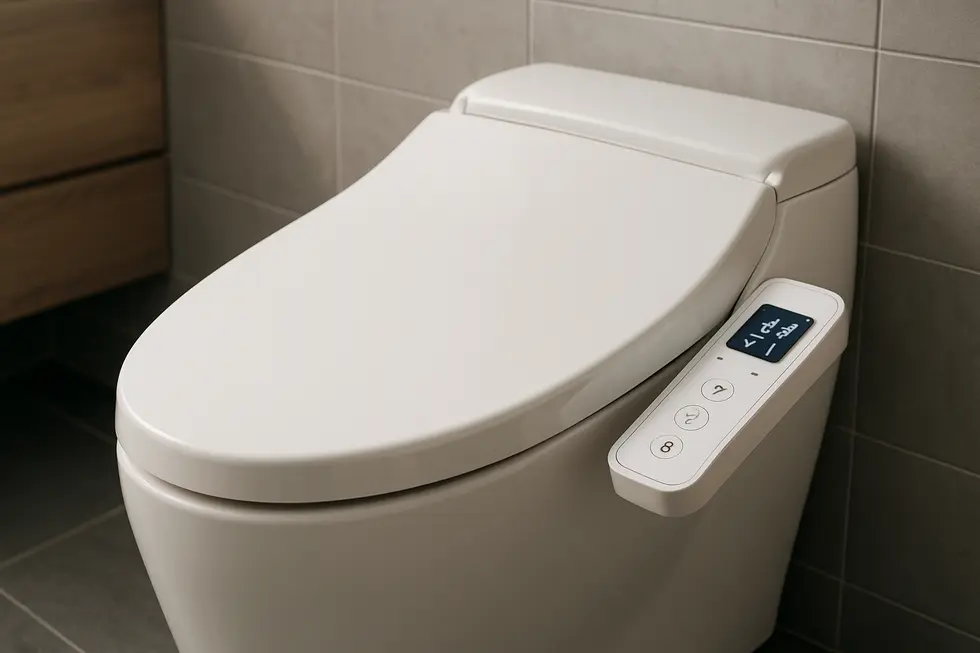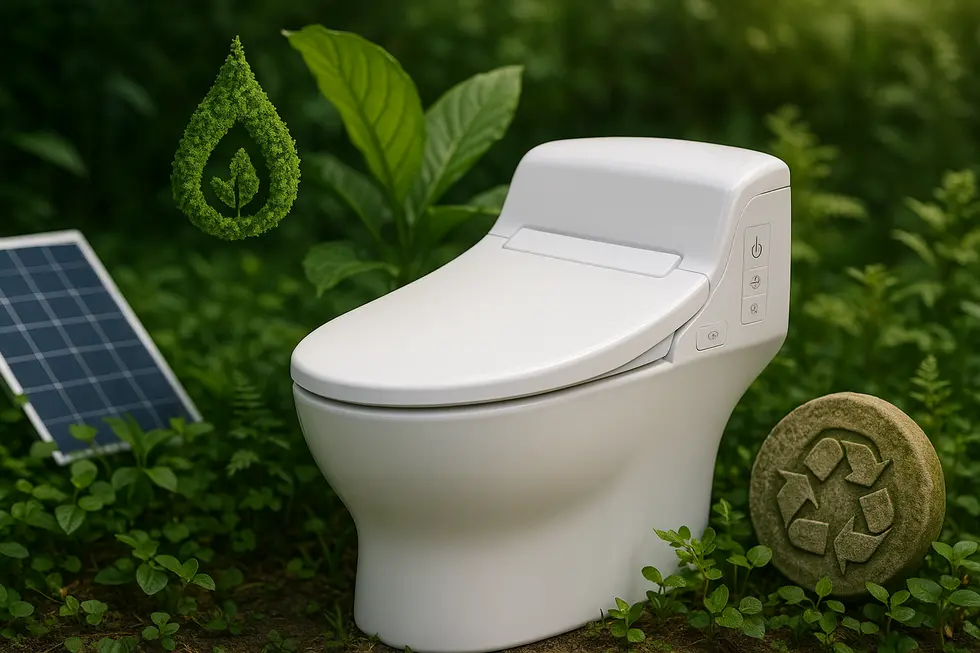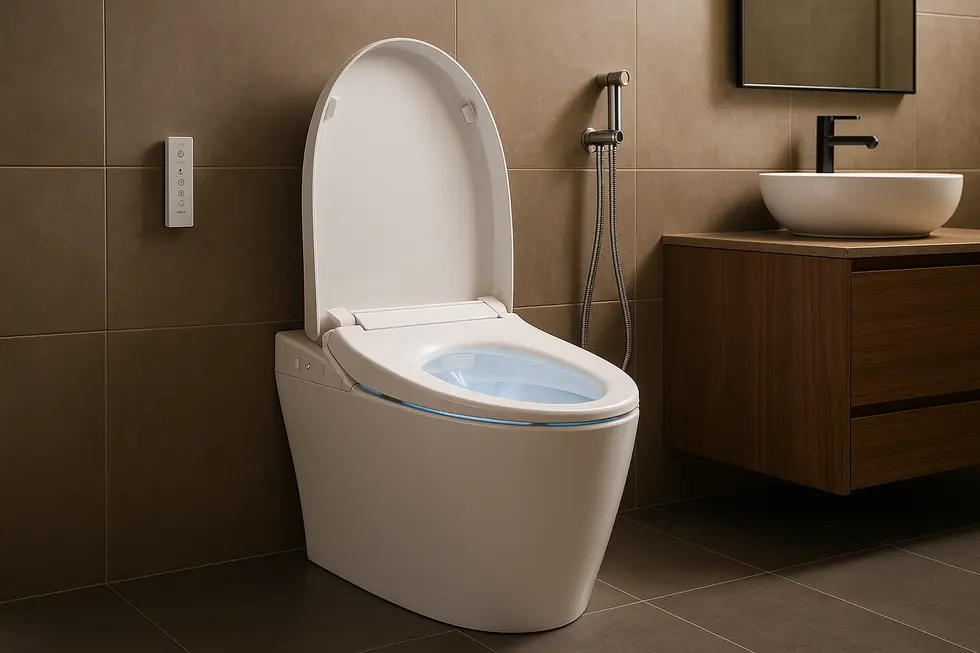Bidet Attachment, Bidet Seat
Heated Water Bidets: Comfort Meets Innovation
Bidet heated water systems offer a blend of technological innovation, comfort, and sustainability, making them a sought-after choice for modern households. Heated water functionality elevates personal hygiene by ensuring consistent warmth and customizable settings. This article delves into the technological backbone of these systems, highlights their impact on user comfort, and considers their energy efficiency and environmental benefits.
Smart Heating Revolution: Inside the New Wave of Bidet Warm-Water Technology

Warm water used to mean a bulky storage tank slowly reheating between users. The latest warm water bidet seats abandon that compromise, hiding compact stainless-steel coils beneath the lid that flash-heat water the instant a user sits down. Flow sensors trigger the element only when needed, while thermostatic chips sample the stream dozens of times per second to keep the temperature within a fraction of a degree, erasing the dreaded first “cold shock” or unexpected scald.
Beyond comfort, this precision unlocks true personalization. Most 2025 models store multiple temperature and pressure presets, so each family member can call up their favorite setting with a single tap on a side panel, handheld remote, or smartphone app. Because water no longer idles in a tank, the bidet heated water system can rinse for as long as desired without running lukewarm, yet it sips power in standby—often less than a night-light.
Heating upgrades go hand in hand with smarter hygiene. Ceramic-coated nozzles now offer separate rear and feminine sprays, each aerated for a softer feel while using less water. After every cycle, the wands automatically rinse in warm water mixed with micro-air bubbles that slash bacterial build-up. Some seats even release a fine foam curtain into the bowl, blocking splashes and trapping odors until the flush carries them away.
Energy efficiency was once a trade-off against luxury, but rapid heaters invert the equation. Microprocessors cut electricity the moment sensors detect the user has stood, and eco modes learn household routines to pre-warm only during peak hours. Homeowners who also install low-flow toilets can see measurable drops in both their water and utility bills.
For users with hemorrhoids, postpartum tenderness, or simply a preference for warmth, the marriage of bidet heated water, toasty seats, and multi-temperature air dryers creates a spa-like ritual that needs no toilet paper. The everyday health and sustainability gains outlined in our guide to the benefits of bidet toilets become even more compelling when every rinse feels this indulgent.
Market analysts predict that smart warm-water systems will appear in half of all new bathroom remodels within five years—a forecast echoed by a recent smart toilet report that singles out instant heating as the breakthrough feature driving mainstream adoption.
Warmth Meets Wellness: The Comfort and Hygiene Edge of Heated-Water Bidets

Warm water used to mean a bulky storage tank slowly reheating between users. The latest bidet heated water seats abandon that compromise, hiding compact stainless-steel coils beneath the lid that flash-heat water the instant a user sits down. Flow sensors trigger the element only when needed, while thermostatic chips sample the stream dozens of times per second to keep the temperature within a fraction of a degree, erasing the dreaded first “cold shock” or unexpected scald.
Beyond comfort, this precision unlocks true personalization. Most 2025 models store multiple temperature and pressure presets, so each family member can call up their favorite setting with a single tap on a side panel, handheld remote, or smartphone app. Because water no longer idles in a tank, bidet heated water systems can rinse for as long as desired without running lukewarm, yet they sip power in standby—often less than a night-light.
Heating upgrades go hand in hand with smarter hygiene. Ceramic-coated nozzles now offer separate rear and feminine sprays, each aerated for a softer feel while using less water. After every cycle, the wands automatically rinse in warm water mixed with micro-air bubbles that slash bacterial build-up. Some bidet heated water seats even release a fine foam curtain into the bowl, blocking splashes and trapping odors until the flush carries them away.
Energy efficiency was once a trade-off against luxury, but rapid heaters invert the equation. Microprocessors cut electricity the moment sensors detect the user has stood, and eco modes learn household routines to pre-warm only during peak hours. Homeowners who also install low-flow toilets can see measurable drops in both their water and utility bills.
For users with hemorrhoids, postpartum tenderness, or simply a preference for warmth, the marriage of bidet heated water, toasty seats, and multi-temperature air dryers creates a spa-like ritual that needs no toilet paper. The everyday health and sustainability gains outlined in our guide to the benefits of bidet toilets become even more compelling when every rinse feels this indulgent.
Medical professionals increasingly recommend warm-water cleansing for sensitive skin conditions, and anecdotal reports echo their praise. Read how physicians frame these advantages in their own words in our discussion of broader bidet benefits. For an evidence-based look at postpartum comfort, see this overview of postpartum bidet benefits.
Warmth Without Waste: Balancing Comfort, Energy, and Ecology in Heated-Water Bidets

Heated-water bidets promise spa-level comfort, yet their real triumph may be quietly ecological. The energy story begins inside the seat. Traditional reservoir heaters warm a fixed volume of water and keep it idling at temperature. Because only about a quart is stored, the heating element cycles briefly, making overall draw modest—roughly the cost of one extra lightbulb per year. Tankless systems flip the script: water passes a micro-coil and is warmed only when you press wash. Standby power plummets, and studies show electricity use falls by nearly forty percent compared with older reservoirs. Either approach still consumes far less energy than manufacturing the toilet paper that bidets displace.
Life-cycle analyses help put the numbers in perspective. One roll of paper demands about 37 gallons of water and a cocktail of pulping chemicals, not to mention the transport emissions before it reaches the bathroom. A bidet cleansing cycle uses one eighth of a gallon and a whisper of electricity. Even when the seat’s dryer is engaged, annual carbon output remains below the footprint of producing a family’s paper supply. Multiply that by millions of households and the math tilts decisively toward bidets.
Users concerned about utility bills can look for seats with occupancy sensors and automatic eco modes; these dim heating or shut it off during long idle stretches. Pairing a bidet with renewable home electricity further shrinks its impact, turning every warm spray into carbon-free comfort. Households without access to outlets can still join the paper-saving movement through non-electric or portable sprayers. Their manual pumps deliver room-temperature cleansing and, according to our portable bidet sustainable living guide, slash paper use by over ninety percent while drawing zero watts.
Water consumption is sometimes raised as a concern, yet a year’s worth of bidet washes equals the water hidden in just two dozen rolls of paper. Sewage systems easily accommodate the extra rinse water, whereas discarded paper clogs landfills and wastewater screens. In short, modern heated-water bidets achieve a rare trifecta: superior hygiene, pampering warmth, and a lighter environmental footprint—proof that comfort and conservation can share the same seat.
Final thoughts
In conclusion, heated water bidets stand out as a convergence of technology and eco-conscious living. They offer superior hygiene and user comfort while promoting energy efficiency and reducing environmental impact. By integrating such systems, families can enjoy enhanced personal care and contribute to a more sustainable future.
Experience a new standard of clean with PEGABidet—designed for comfort, safety, and independence. Join thousands who trust us to make personal care simple and dignified. Contact us contact@pegabidet.com
About us
PEGABidet is a brand owned by L.A NEXTGEN LLC, based in California. We design intuitive, hygienic, and accessible bathroom solutions that prioritize safety, dignity, and independence. Our mission is to make personal care effortless and empowering for people at every stage of life.

